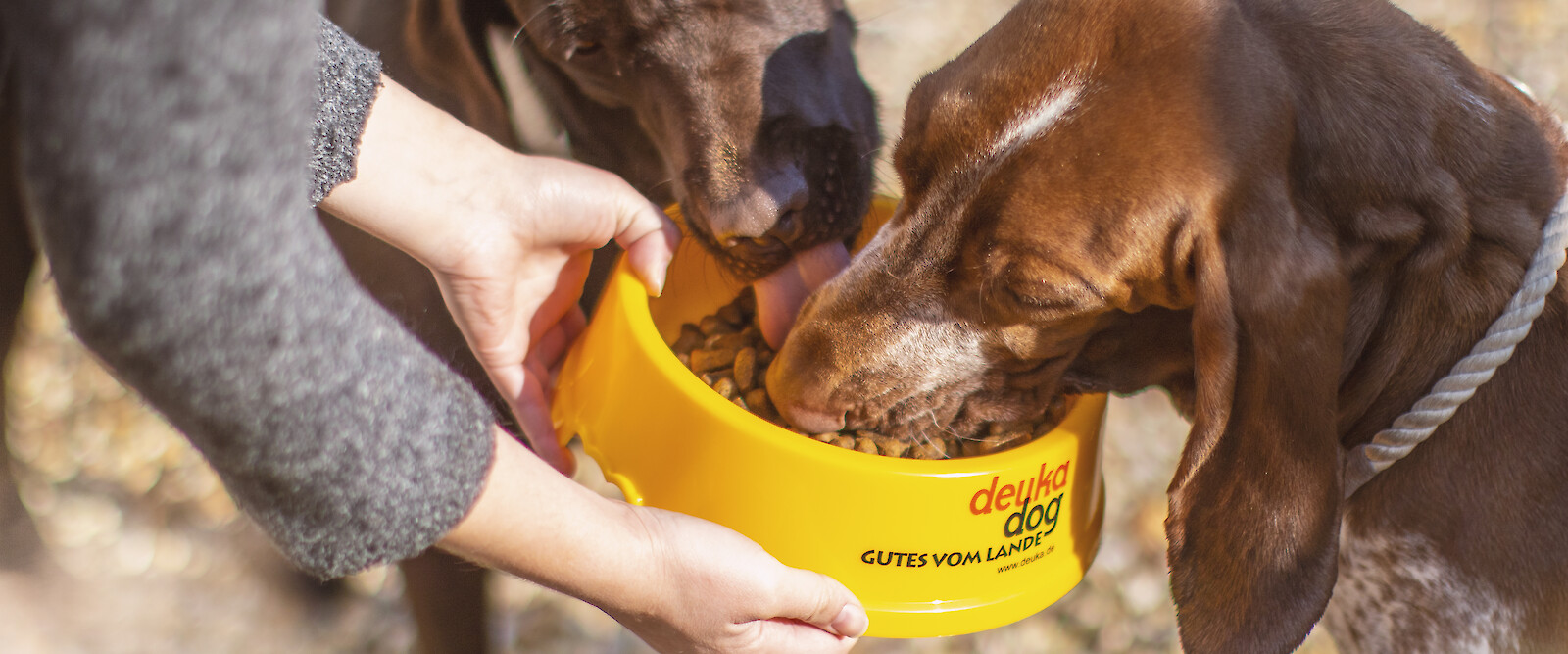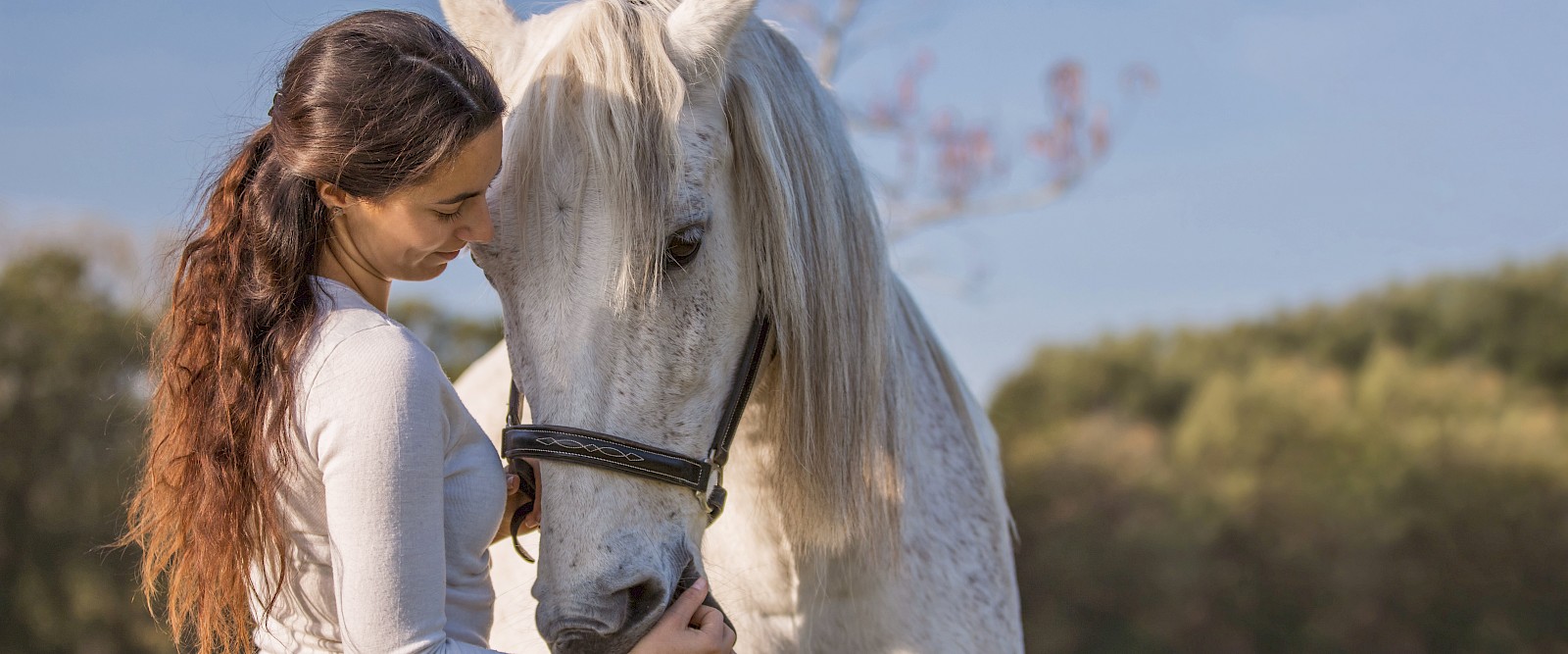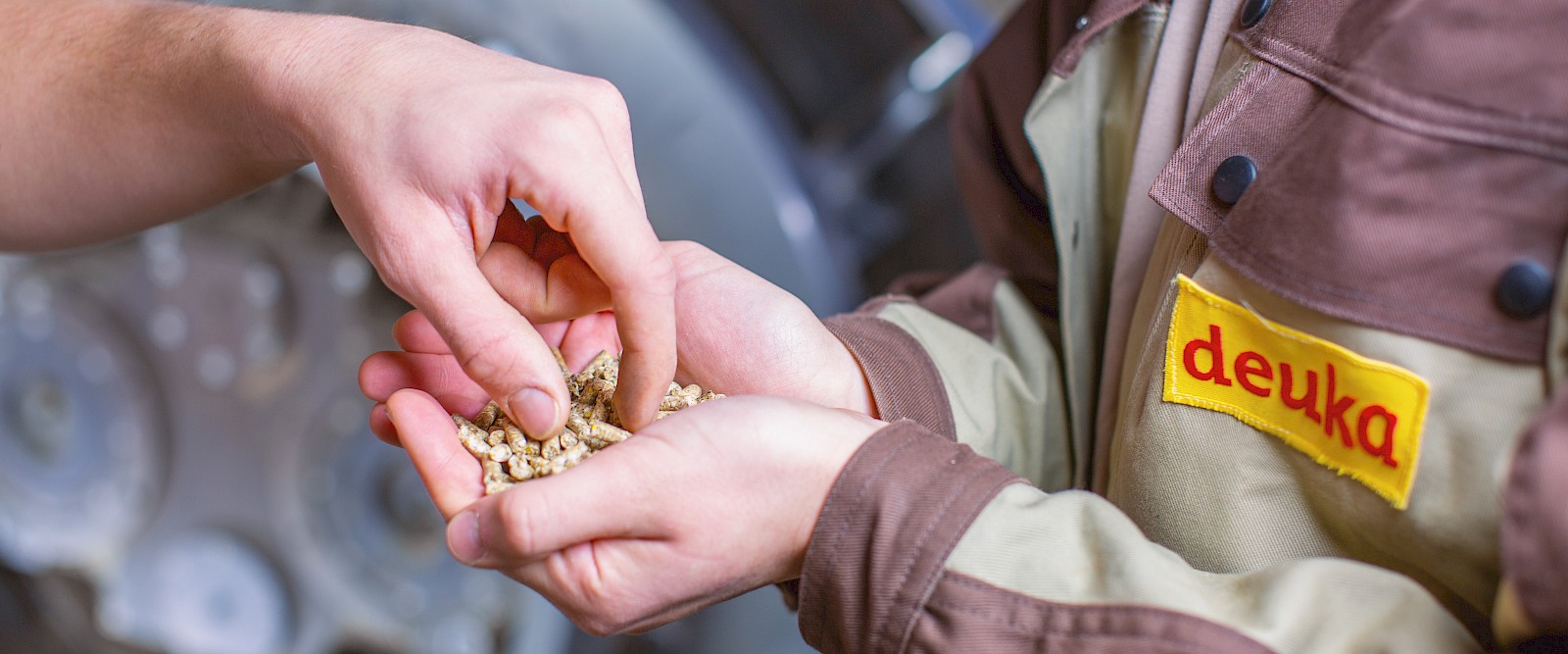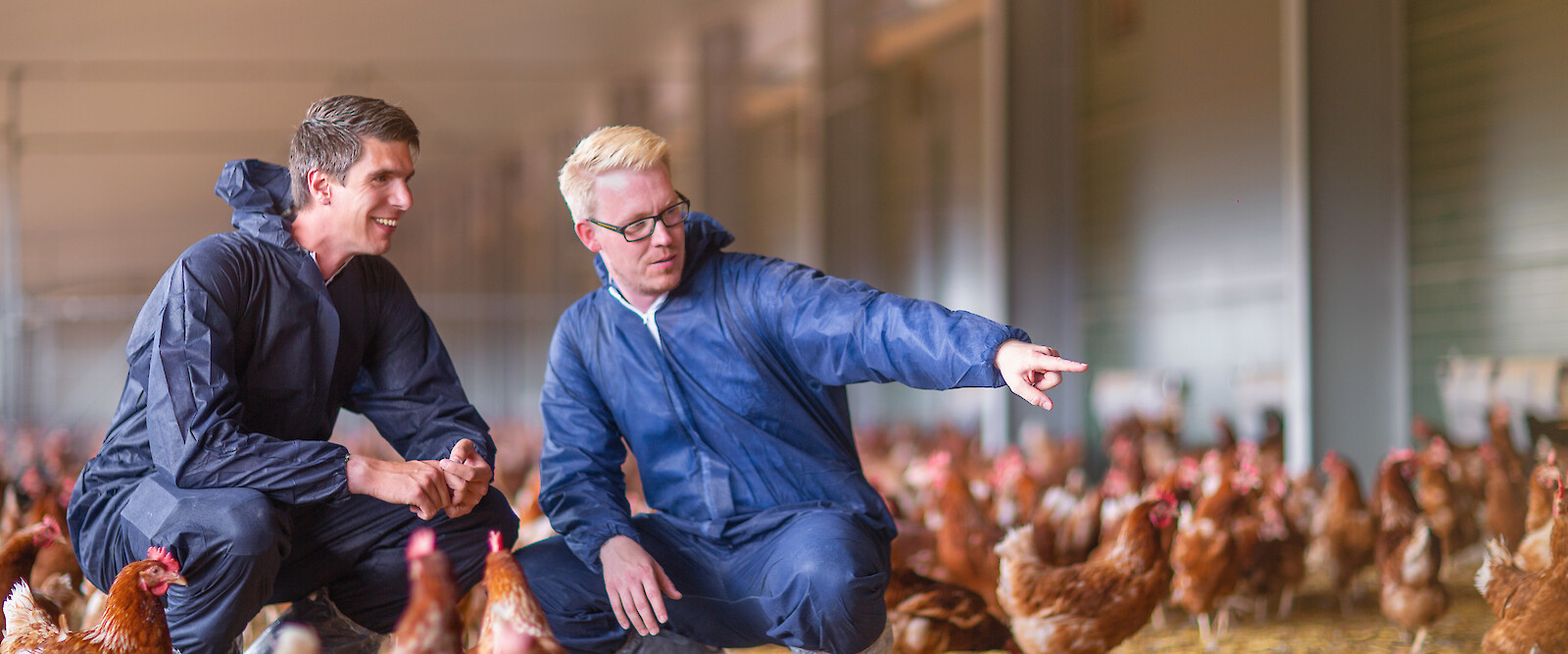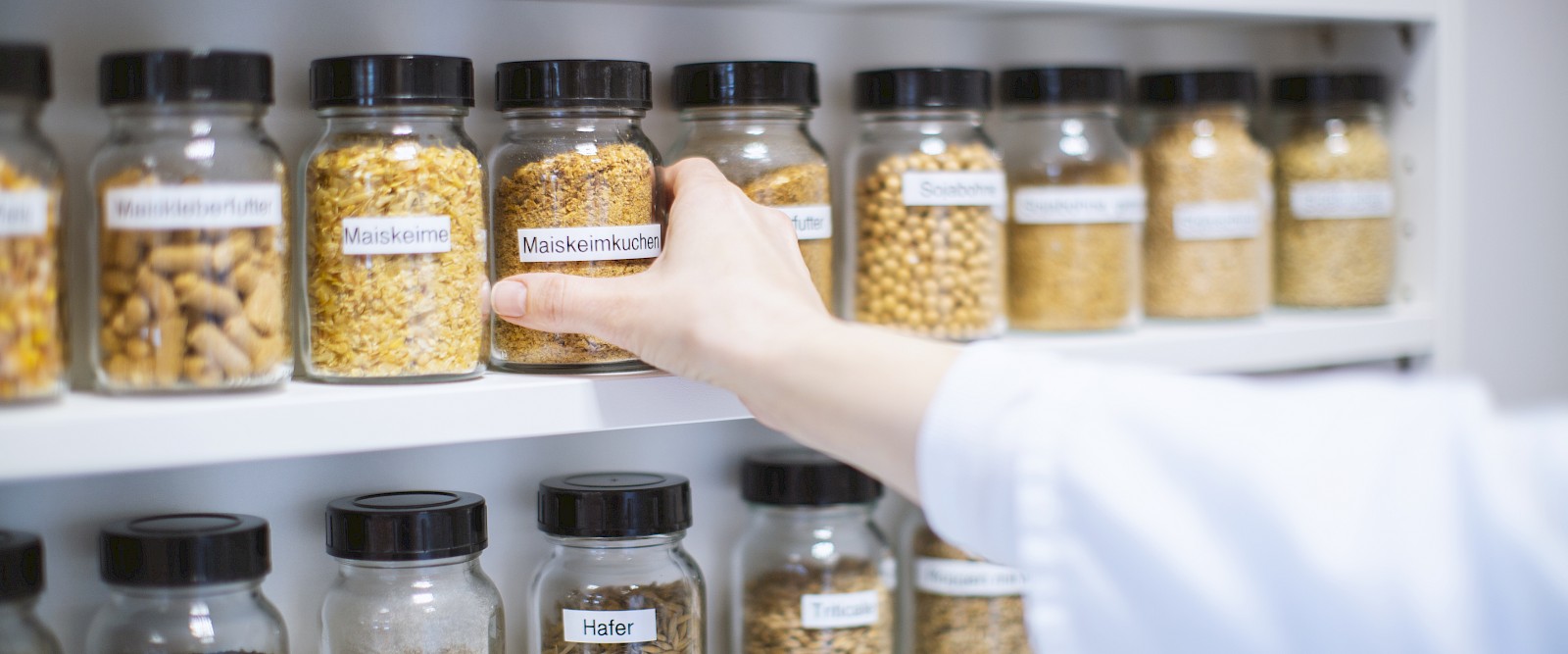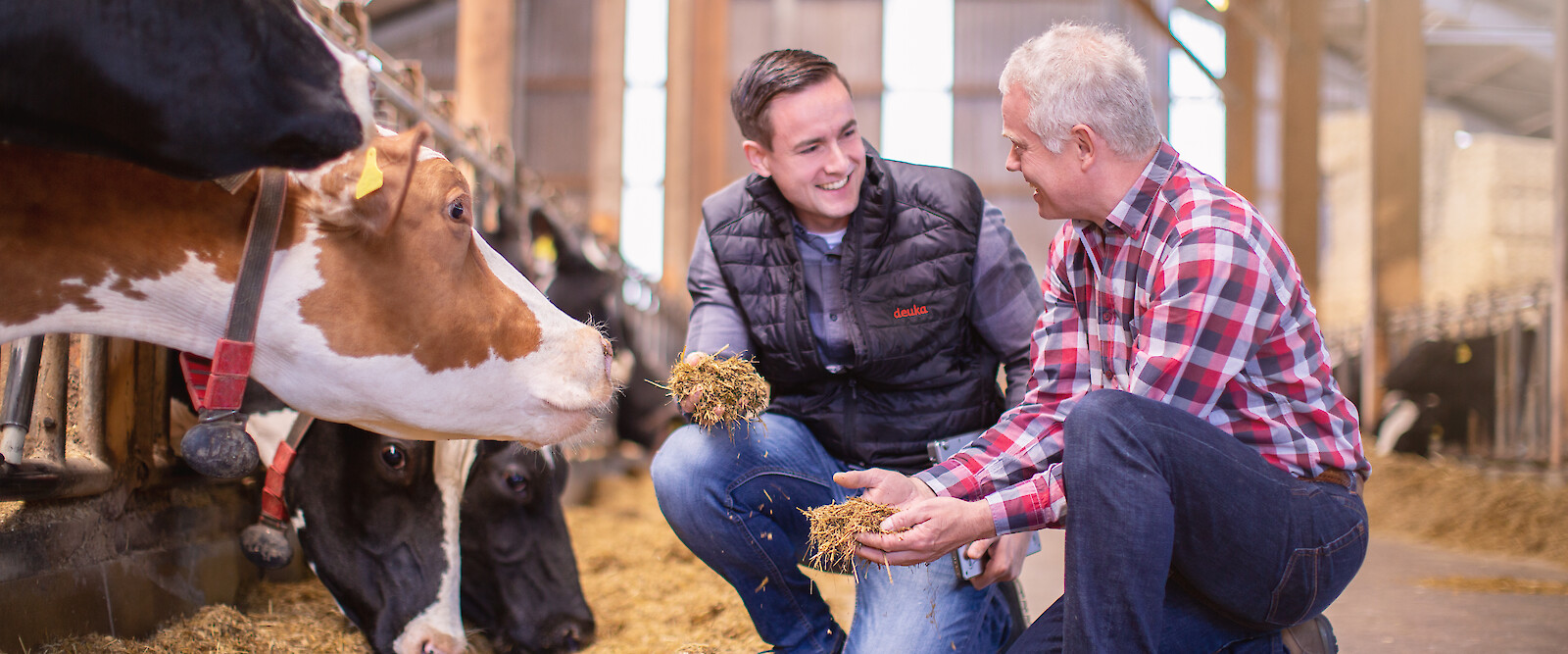Raw material and nutrient lexicon
Weitere Einträge
- Main nutrients
- Maize
- Maize germ extraction meal
- Malt germs
- Manganese
- Cassava
- Methionine
- Methionine
- Mixed feed
- Molasses chips
- Monocalcium phosphate
- Monodicalcium phosphate
Mixed feed
A balanced diet is a basic prerequisite for health - this applies equally to humans and animals. While we humans can largely decide for ourselves what we eat, our pets and farm animals depend on us humans to provide them with food that is appropriate to their species and needs.
Animal feed must meet these diverse demands, i.e. the compound feed manufacturer bears responsibility for the well-being of the animals. Many ingredients and additives only develop their full value in their targeted combination with each other - or in other words: it's all about the right mixture.
Compound feed is therefore more than the sum of its parts!
The compound feed manufacturer produces a wide range of animal-specific complete and supplementary feeds, which are produced and controlled according to the latest scientific findings. This requires profound expertise, modern production facilities and meticulous quality management.
Regular controls and proof of origin for the raw materials and additives used ensure that the feeds are of impeccable quality. In addition, German compound feed producers declare all raw materials used as well as ingredients and additives contained on the bag tag or the accompanying documents. This open declaration ensures complete transparency and additional safety for the animal keeper.
Feedstuffs fed to farm animals are part of the food chain. The formula is simple: the more wholesome the feed, the higher the quality of the animal products that we humans consume in the form of meat and sausages, milk and dairy products, and eggs. Deutsche Tiernahrung Cremer is aware of this responsibility and puts all its energy into ensuring the high quality of the compound feeds it produces.
The most important raw material in compound feed production is grain. In addition, raw materials are used that come directly from the food industry. These include bran and meal, for example, which are by-products of grain and oil mills. Other important feed components are corn gluten feed from the starch industry, molasses and dried pulp from sugar productionor citrus and fruit pomace from the fruit juice industry. These by-products of the food industry account for about 60 per cent of all compound feeds. These valuable raw materials are thus returned to the food cycle, avoiding the otherwise necessary expensive and environmentally damaging destruction. In this way, compound feed also fulfils an important function with regard to environmentally friendly and sustainable use of resources.
Source: Compound feed - more than the sum of its parts; Deutscher Verband Tiernahrung e.V. (German Pet Food Association). (DVT) and the company's own documents
